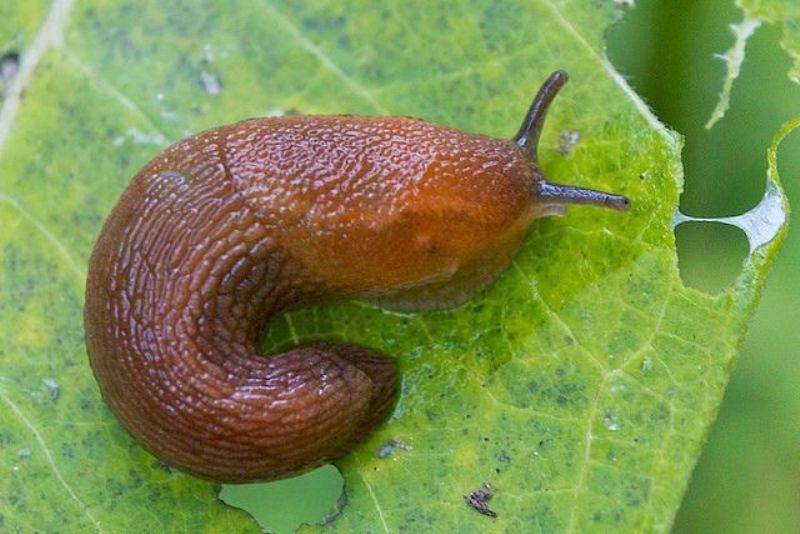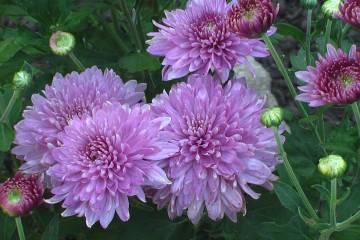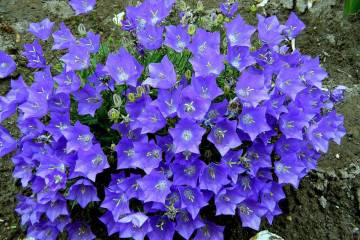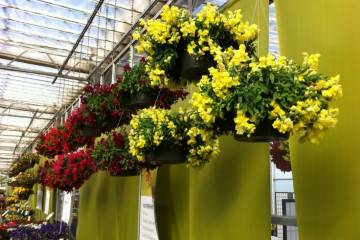Carpathian bell - growing and planting by seeds
Content:
The Carpathian bell is a whole genus of attractive ornamental plants. They are distinguished by a variety of colors and are actively used in landscape design. These flowers are used to decorate flower beds, alpine slides, borders.
Description of the Carpathian bell
This flower is very popular with gardeners. The culture is characterized by unpretentious care and is not afraid of cold weather. Its bloom continues throughout the summer.
The origin and appearance of the plant
The culture belongs to the Kolokolchikov family. In natural conditions, the plant is found on the limestone rocks of the Carpathians. The name of the flower is connected with this. Bells are often called alpine bells. This is due to their distribution in the mountains of Central Europe.
Bellflower is a perennial plant that reaches a maximum height of 30 cm. In the area of the rhizome there are oval leaves forming a rosette. They are smaller in the upper part of the stem.
During the summer, the culture is abundantly covered with rich colors. In appearance, they resemble a funnel-shaped cup. Its diameter does not exceed 5 cm. In September, fruit boxes appear in the flower area.
What does a Carpathian bell look like and what is
It is a herbaceous plant that comes in many varieties. The color scheme depends on the type of plant:
- white is typical for plants of varieties Alba or White;
- soft blue is found in Isabelle or Celestine;
- blue is typical for Chenton Joy and Riersley varieties;
- purple decorates the bushes of Carpatenkrone.
Popular types of bells for growing in the garden
To plant a crop, you need to choose the right variety of it. Today there are many varieties, each with specific characteristics.
Bell carpathian white
This variety has white buds. The petals have slightly wavy edges, which makes the flower more elegant. The plant is compact in size, unique in appearance and has a long flowering period.
Bell carpathian blue
This culture is also called Goluba or Weiss. It is characterized by blue inflorescences with a diameter of 4 cm.The bushes have a rounded shape and reach a height of 20 cm.
Bell Carpathian Gnome
The Dwarf bell has certain characteristics. This is a small bush that does not exceed 15 cm in height. The buds are blue, white or purple. The flowering culture lasts six months.
Bell carpathian blue
This variety is as close as possible to a wild plant. It is characterized by a rich blue color of the buds. The flowers look beautiful when combined with dark green foliage.
Growing conditions
You can grow a crop in any climatic conditions. In this case, it is important to pay attention to the correct reproduction of the plant. Sowing seeds and dividing the bush are considered effective methods.
Growing a bell from seeds
For breeding bells, the seed method is most often used. For planting in the ground, you need to use only high-quality material.
Growing a Carpathian bell from seeds helps to achieve flowering in the first year. At the same time, you need to correctly choose the sowing time and provide the seedlings with high-quality care.
Seedling care
To grow a strong and powerful plant, you need to properly care for it. For this, the culture should be provided with suitable conditions:
- the temperature should be 20 ° C;
- a box with seeds must be placed on a lighted windowsill;
- the room should be ventilated daily and the soil should be sprayed;
- after a week, you can begin to harden the seeds. To do this, you need to put the container in a cool place with a temperature of up to -4 ° C;
- so that the seeds do not freeze, the soil should be covered with snow.
Germinating seeds is considered a rather difficult process.
Seedling care
When the first shoots appear, you need to move the container to a room with a temperature of 15 ° C. The first shoots must be planted so that they do not damage the rest of the shoots. Seedlings require full watering, airing, lighting.
Plants are moved into open soil when at least 3 leaves appear on them. First, it is worth preparing a planting site by feeding it well. If possible, turf and sand are added to the soil.
When and how to plant a bell in open ground
For planting work to be successful, the following features must be taken into account:
- the plant can grow without transplants for 5 years, the main thing is to choose a suitable site;
- the flower is recommended to be planted in a lighted area, since in the shade its inflorescences turn pale;
- bells do not tolerate stagnant moisture, therefore they require high-quality drainage;
- the soil should be slightly alkaline.
Further care
In the heat, the culture needs to be watered often enough. In cool weather, it is worth reducing the number of waterings or completely abandoning the procedure.
Top dressing
The bell is considered an unpretentious culture. However, for full flowering, additional substances must be added to the soil. This should be done 2 times during the season. In early spring, the ground needs to be fed for the first time. For this, nitrogen agents are used. Fertilizers are applied for the second time during the period when flowers appear. At this stage, potassium and phosphorus are used.
Features of care during flowering
During the flowering period, the culture needs to be watered periodically. Additionally, fertilizers should be applied, but it is recommended to do this carefully. With an excessive amount of dressing, there is a risk of leaf overgrowth and wilting of flowers.
Features of care during the rest period
During the rest period, it is worth completely or partially stopping watering and using fertilizers. It is imperative to cut off faded buds. The yellow leaves must be removed as well.
Preparing for winter
It is not required to cover the culture in the Middle Lane. It is characterized by excellent frost resistance. In more northern areas, the bushes need to be cut at the root and insulated with fallen leaves. This method is suitable for areas without snow.
Potential pests and diseases
This plant is highly resistant to diseases and pests. The development of pathologies is usually associated with a violation of the rules for caring for the culture. When you grow a bellflower for several years, there is a risk of developing fungal infections. To avoid such problems, foundationazol is used 2 times a year for prophylaxis.
When growing a flower in high humidity conditions, there is a risk of infection by the slobbery penny. This problem can be easily eliminated with a tincture of garlic.
Sometimes the leaves of the plant are affected by rust. In this case, the greens are covered with brown-brown spots. Copper-based products help to cope with pathology. To avoid ailment, phytosporin or gumi is used.
Carpathian bell is a refined and delicate plant. Bushes are undemanding to care for. This culture is characterized by excellent decorative properties and serves as a decoration for any site.




















